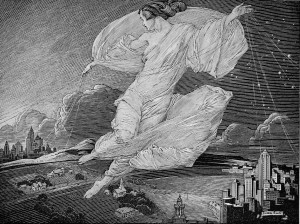by Daniel on February 24, 2016
So, this morning I had a brief Twitter conversation with Simon Jack, the economics editor of the Today programme, about a metaphor he used to introduce an interview on the subject of the British Pound’s sharp devaluation as the EU exit referendum was launched. The line which annoyed me at seven o’clock this morning was:
“I think of the exchange rate as something like a national share price, and ours has been falling”
See below for why, although I understand the point he was trying to make, I think this is not a good way to think of exchange rates…
[click to continue…]
by John Holbo on February 24, 2016
Following up my Franklin Booth post, how about I do a series of comics and art posts this week?
I made a fine recent purchase on Comixology: Sergio Toppi’s The Collector. If you don’t know Toppi, a Google image search will give the flavor. The comic is pretty ok. The Collector is a cool-looking, mysterious dude who collects precious antiquities. He always gets what he wants. He’s like an amoral Indiana Jones. There are supernatural elements. Mostly you read it for the art: [click to continue…]
by John Holbo on February 24, 2016
Whew! My Dreher post comments are running kind of long. Clearly, Crooked Timber needs fresh content. OK, I just realized that two things I’ve been thinking about this week – Rod Dreher’s Ben-Op plans, and Franklin Booth’s pen-and-ink style – are kind of the same. Franklin Booth? Via Lines and Colors, I found this nice page of fairly high-quality scans. This sort of stuff (click for larger):

That’s pen-and-ink, because Booth was trying … well, I’ll just let Wikipedia explain:
His unusual technique was the result of a misunderstanding: Booth scrupulously copied magazine illustrations which he thought were pen-and-ink drawings. In fact, they were wood engravings. As a result, this led him to develop a style of drawing composed of thousands of lines, whose careful positioning next to one another produced variations in density and shade. The characteristics of his art were his scale extremes with large buildings and forests looming over tiny figures, decorative scrolls and borders, classic hand lettering and gnarled trees.
[click to continue…]
